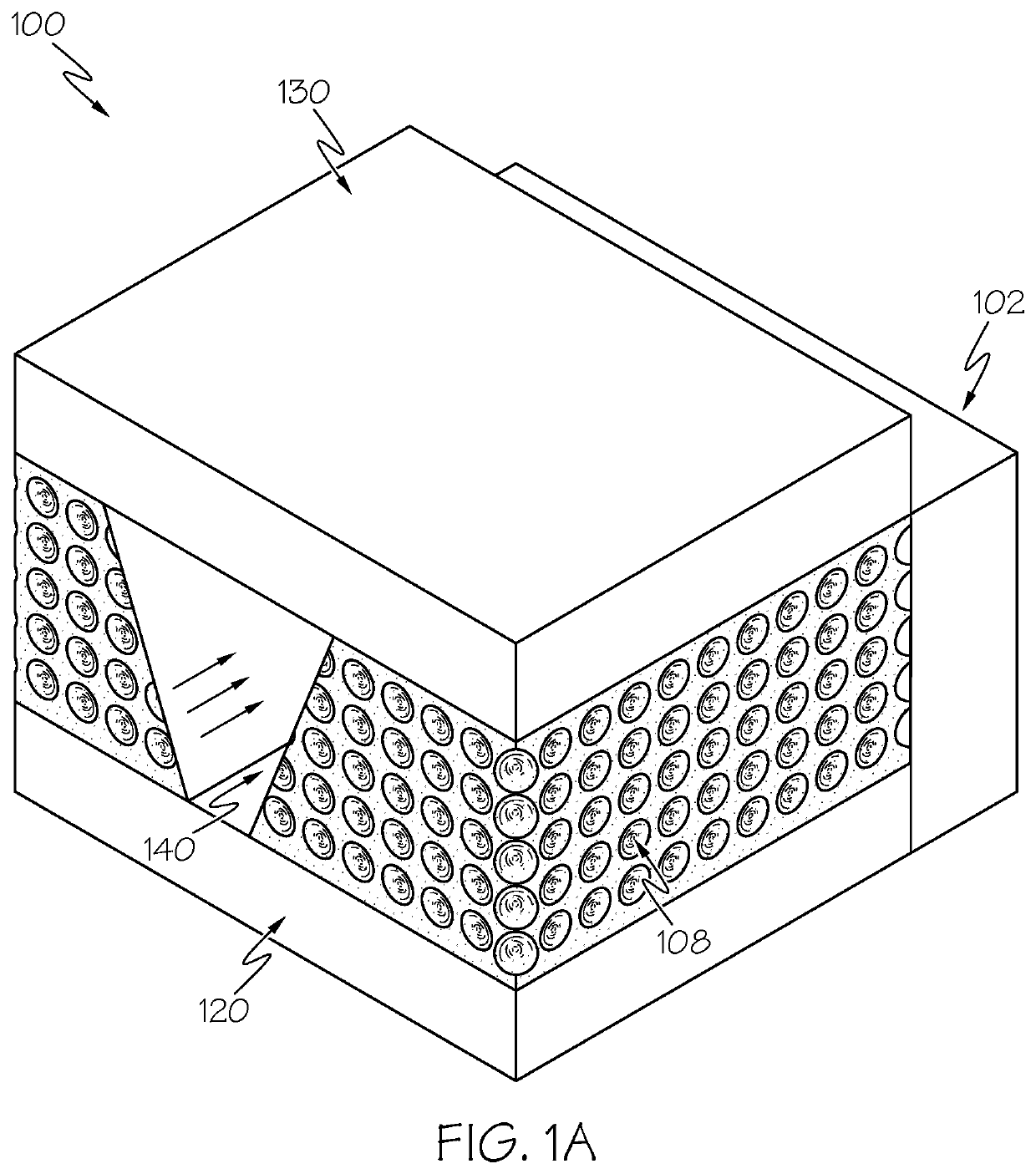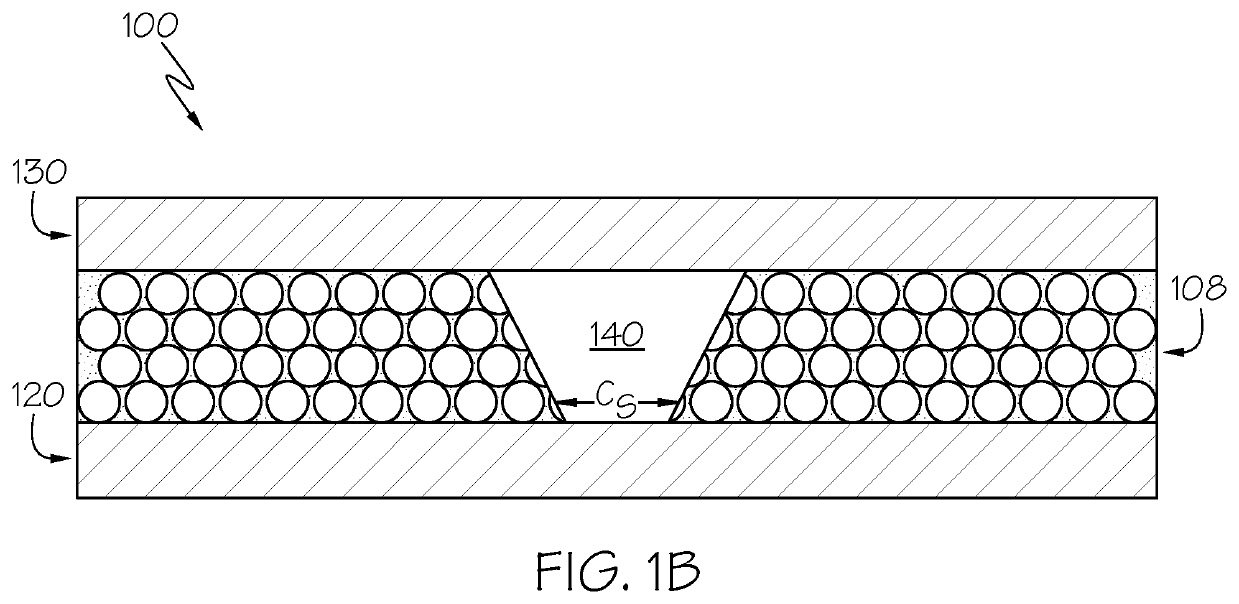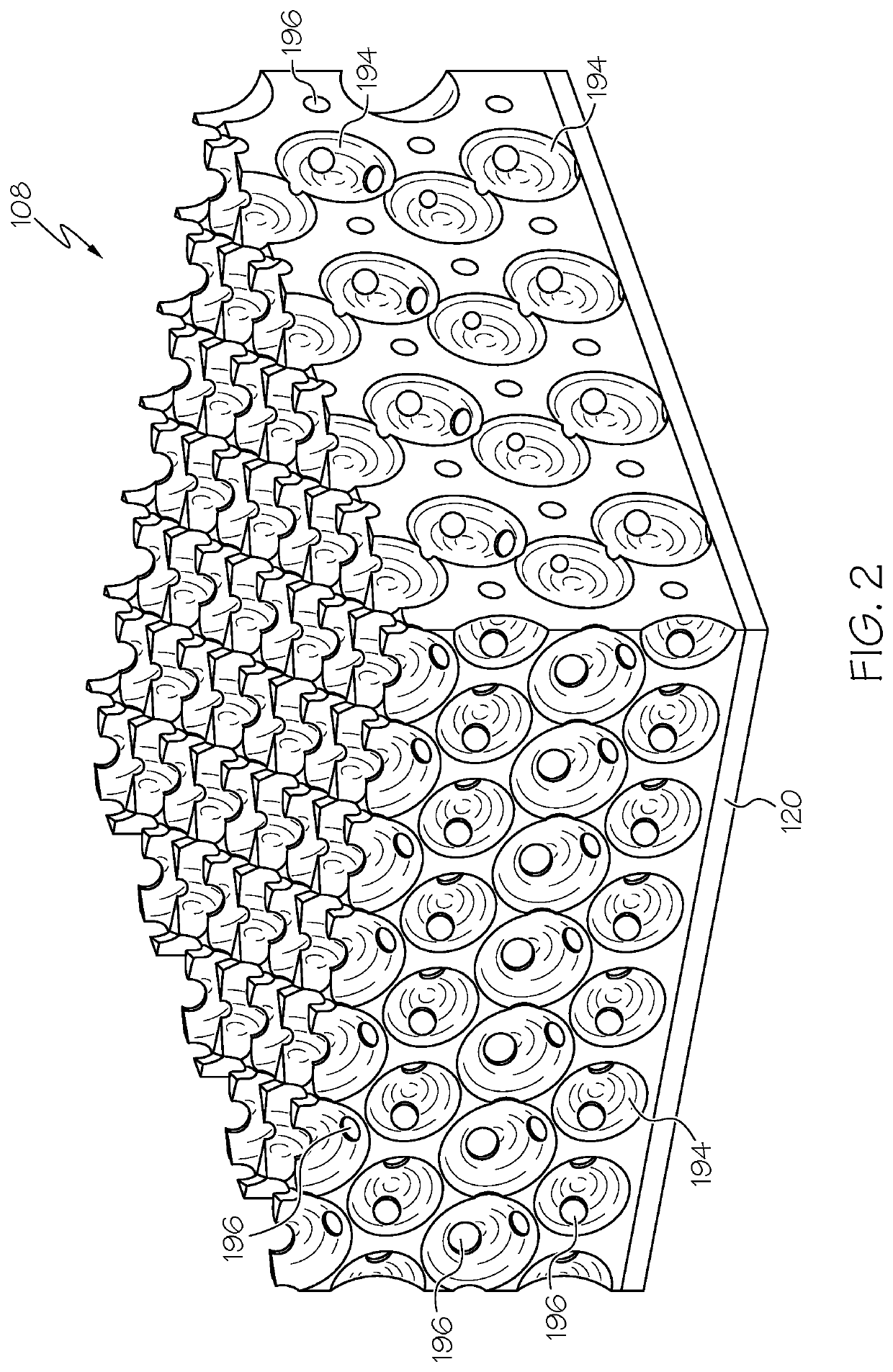Methods For Forming Flow Channels In Metal Inverse Opal Structures
a flow channel and flow channel technology, applied in the field of assembly forming, can solve the problems of increasing heat generation of electronics assemblies, increasing the operating temperature of electronics assemblies, and increasing the difficulty of thermal management of electronics assemblies, so as to improve the cooling of heat-generating devices and improve the flow of cooling fluid
- Summary
- Abstract
- Description
- Claims
- Application Information
AI Technical Summary
Benefits of technology
Problems solved by technology
Method used
Image
Examples
Embodiment Construction
[0019]Embodiments described herein are directed to methods for forming assemblies for cooling heat-generating devices. The heat-generating devices may include, as one example, electronics modules including a power electronics device. Power electronics devices generally generate heat during operation that should be dissipated, and cooling fluid may be utilized to dissipate the heat.
[0020]Embodiments described herein are directed to cooling assemblies including a MIO structure. One or more flow channels are formed within the MIO structure, and cooling fluid may be passed through the one or more flow channels. The one or more flow channels can increase the amount of cooling fluid that may be passed through the MIO structure, thereby increasing the amount of heat that can be dissipated from the heat-generating device. Further, in some applications, the one or more flow channels may be utilized to direct the cooling fluid through the MIO structure, for example to impinge the cooling flui...
PUM
| Property | Measurement | Unit |
|---|---|---|
| diameter | aaaaa | aaaaa |
| diameter | aaaaa | aaaaa |
| melting point | aaaaa | aaaaa |
Abstract
Description
Claims
Application Information
 Login to View More
Login to View More - Generate Ideas
- Intellectual Property
- Life Sciences
- Materials
- Tech Scout
- Unparalleled Data Quality
- Higher Quality Content
- 60% Fewer Hallucinations
Browse by: Latest US Patents, China's latest patents, Technical Efficacy Thesaurus, Application Domain, Technology Topic, Popular Technical Reports.
© 2025 PatSnap. All rights reserved.Legal|Privacy policy|Modern Slavery Act Transparency Statement|Sitemap|About US| Contact US: help@patsnap.com



